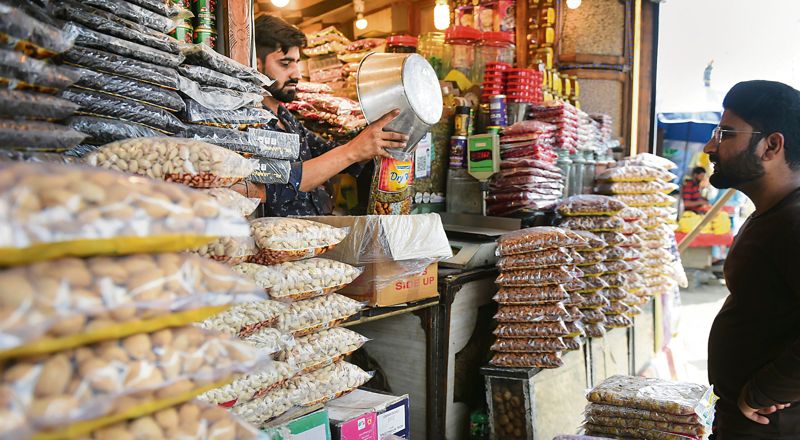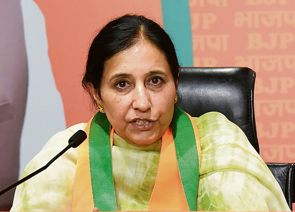
Practical: Plastic is useful in ways that are beyond enumeration. It is ubiquitous. PTI
TK Arun
Senior Journalist
Do not ban plastic; the costs are too high for society, in particular for the less well-off. Instead, invest heavily in technologies to degrade the plastic not already amenable to biodegradation and deploy these to solve the problem. India has the worker capacity to collect all plastic waste and recycle it or treat it with chemical or biological agents to convert it into simpler compounds such as carbon dioxide, water and methane. India also has the brain power to innovate novel solutions to the problem of plastic persistence in the ecosystem.
Different countries are preparing to ban plastic. Several states and cities in India have already put in place bans on plastic in general or on single-use plastic. These bans basically serve to add to the income stream of protection racketeers, some of them entrenched in the state machinery, who would allow people to carry on with business as usual, occasionally penalising some offenders to demonstrate what would happen to those who refuse to pay the protection fee.
Plastic breaks down into smaller pieces and those small pieces into even smaller pieces, resulting in the end in things called microplastic. When polyester clothes are washed in a machine, very small particles of the material used to make the fibre break off and join the drained water, and these microplastics eventually reach the ocean. Using liquid detergents, rather than powder, reduces the abrasion and breakage of fibre when synthetic clothes are washed.
Reduce, reuse, recycle (RRR) is often prescribed as the most effective mantra for the problem of plastic persistence; some estimates hold that there are more plastic parts accumulated in the ocean than there are fish. Microplastic can enter the food chain and ultimately the human body. The consequences could be quite damaging. The problem is real, but the solution is not to ban plastic. Plastic is useful in ways that are beyond enumeration. From packaging to medical gear, from spectacle lenses to aircraft windowpanes, from strong but light machinery parts to the housing of most electronics, plastic is the mainstay of modern life.
Consider a street vendor who sells vegetables and fruits, a shopkeeper in less well-off localities who sells a variety of goods, from food to cosmetics, packed in plastic pouches and sachets, household articles used by the poor ranging from footwear and toys to figurines of divinity — plastic is ubiquitous.
It might be argued that not all plastic is proposed to be banned, only single-use plastic is being banned right now. This begs the question, how is this a real solution to the problem of plastic and other so-called forever chemicals?
The answer is a pragmatic shrug of the shoulders: we must begin somewhere and reduce plastic use to the extent we can. This is the kind of pragmatism which results in the ridiculous demand that shoppers should use cloth bags to carry home numerous items of grocery, each one of which is packed in, what else, plastic.
Already, technology exists to make some kinds of plastic biodegradable. Polyolefins, a term used to describe both polyethylene and polypropylene in different forms, can be rendered degradable at speed by adding chemical additives called d2w and d2p, which make polyolefins biodegradable in the presence of oxygen.
These have been in use around the world for around four decades. But in India, their use is caught up in a tussle over standards and testing. It takes roughly two years to demonstrate biodegradability, whereas companies need faster certification. Another problem is the industry’s finding that the standard specified by the Bureau of Indian Standards for breakdown of plastic molecules is faulty; according to them, it excludes the first round breakdown. They want the government to use a standard test that is used in other parts of the world, such as ASTM D6954, till the dispute over the standard is rectified.
These are industry demands that can be entertained without any dire, immediate threat to human health and well-being.
However, d2w biodegradable technology is not suitable for PET, polystyrene, nylon and PVC (polyvinyl chloride). The challenge is to degrade them too. If bacteria can be cultured to eat up oil slicks, there is no reason why plastic, too, should not be amenable to such conversion into naturally occurring compounds.
This is a technical challenge at which the government should throw a lot of money and brain power. India’s biotechnology capability is, for the most part, toiling away abroad in labs run by multinational companies and foreign governments.
Indian universities and scientific councils should invite some leading biotechnologists of Indian origin back to India, with the promise of autonomy and funding, to develop the solutions the world at large needs in degrading plastic.
Then, there is the task of collecting, sorting, cleaning and making available for processing the millions of tonnes of plastic disposed of in the country. As it is, it is estimated that about 60 per cent of plastic refuse is collected for recycling in India. India has enough people to do the labour-intensive job. If their remuneration is improved, dipping into a levy that can be imposed on plastic at the raw material stage and utilised for RRR and degradation, it would add to employment and environmental sustainability. Sewage should, of course, be treated for plastic degradation, along with other treatment that sewage is supposed to receive, in any case.
The point is to find solutions to the plastic problem in a manner that converts the problem into a giant, profitable opportunity that creates decent livelihoods, profits and sustainability. This, of course, is a little more complex than a simple, unenforceable ban. But it is also more sustainable.
Join Whatsapp Channel of The Tribune for latest updates.




























